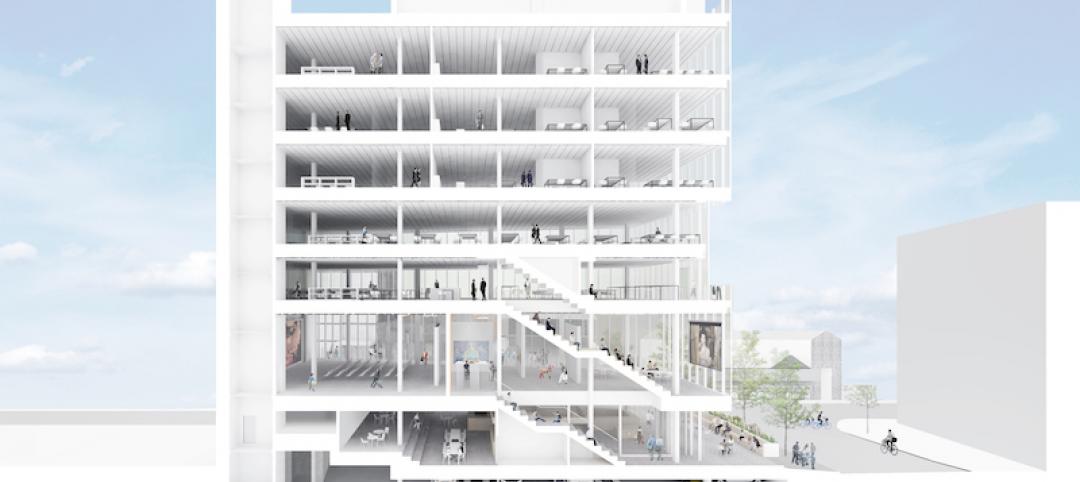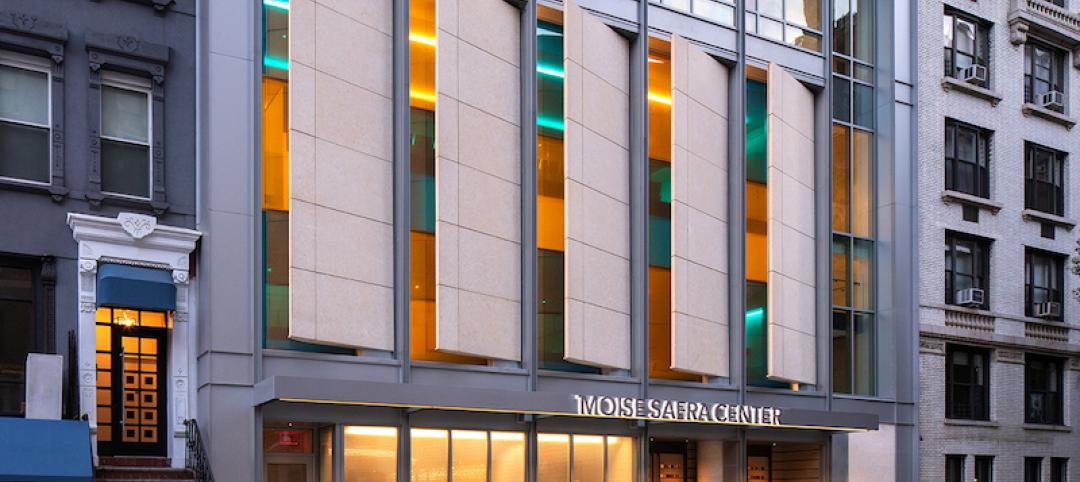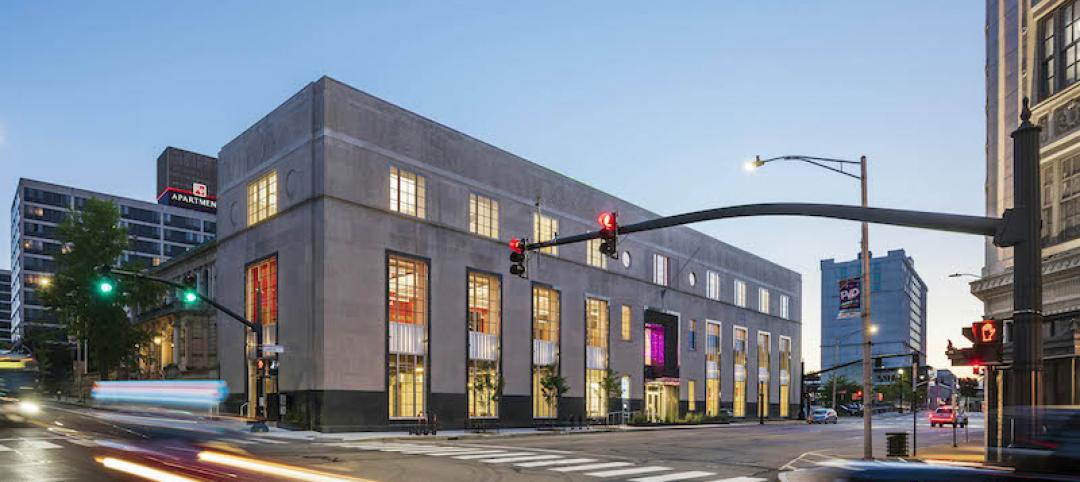David Geffen Hall, the acoustically challenged home to the New York Philharmonic at Lincoln Center for the Performing Arts in New York City, will reopen in October, 18 months ahead of schedule, as a “reimagined” performance space following its $550 million reconstruction and renovation.
On Wednesday, Lincoln Center made official the hall’s reopening plans at a press conference whose attendees included New York Governor Kathy Hochul and New York City Mayor Eric Adams, the latter of whom compared this project—which was completed during a coronavirus pandemic that shut down many businesses and activities in the city, including Lincoln Center—to the construction of the Empire State Building in one year and 24 days during the Great Depression of the 1930s.
Adams also made the connection between tourism that he hopes this refurbished hall will attract and his administration’s commitment to public safety at a time when violent crimes in New York City have risen alarmingly.

In the press conference’s audience was a cohort of construction workers for this project that included Milton Angeles, a civil engineer for Turner Construction, the project’s construction manager. During his brief speech, Angeles recalled being out of work before he was hired for his current position. This reconstruction created 3,000 construction job and 6,000 in total, and was expected to generate more than $600 million in economic activity through the reopening.
Other design and building team members include Thornton Tomasetti and Kohler Ronan (engineering), Diamond Schmitt Architects (architectural design), Akustiks (acoustics), Fisher Dachs (theater design), and Tod Williams Billie Tsien Architects (public space design, including a lobby that will double the size of its predecessor space).
The vast majority of this project’s cost—which was fully funded as of yesterday—was raised from private donor sources.
A SOUND INVESTMENT
At least since April 2021, Lincoln Center has been saying that David Geffen Hall would reopen in the fall of 2022, well ahead of its initial 2024 opening target. The pandemic, in fact, allowed for an accelerated reconstruction schedule after the Philharmonic stopped performing at Geffen and temporarily shuttled between Alice Tully Hall and Rose Theater at Jazz, two other performance spaces on Lincoln Center’s campus.
The New York Times reported yesterday that the pandemic cost the Philharmonic more than $27 million in ticket revenue.
Since opening in 1962, first under the name Philharmonic Hall and then as Avery Fisher Hall, the building had been plagued by complaints about the inferior quality of its acoustics and its design aesthetics (the hall was, essentially, a mammoth square box). In 2015, the record and movie producer David Geffen contributed $100 million for renovations and naming rights, and that ante kickstarted the fundraising campaign to reconstruct the hall.
“This is not just a renovation,” asserted Gary McCluskie, a principal architect with Diamond Schmitt, who spoke with BD+C yesterday.

FEWER SEATS, MORE TRANSPARENCY
Key changes to improve the hall’s acoustics and sight lines, he explained, include eliminating its proscenium, moving the stage 24 ft forward, and positioning the stage so that the audience seating wraps around it. The design team reduced the seating to 2,200, from 2,738, reconstructed the side tiers, and replaced what had been plaster walls with 2- to 4-inch-thick beech wood cladding that is attached to concrete.
“Acoustics is all about balance,” said Paul Scarbrough, a Principal with Akustiks. “The audience absorbs sound, so with fewer people there’s less absorption.” He and McCluskie also pointed out that the hall—including motorized plastic reflectors in the ceiling, its lighting, the stage itself, and its sound—can be reconfigured for different types of performance events. (Scarbrough noted that amplified versus orchestral music requires different acoustical considerations.)


“We redefined every material we used to capture the energy of the performances,” said McCluskie. He added that those materials and fabrics are being carried over into the hall’s public spaces that include a Welcome Center, a Grand Promenade that Lincoln Center claims will create one of the largest gathering spaces for a performance facility in the city, and the addition of The Sidewalk Studio, a ground-floor home for educational, artistic and community activities with floor-to-ceiling windows for spectators to watch.
The hall’s expanded lobby will feature a 50-ft-long media streaming wall that displays concerts and events in real time.
The building will offer 11,000 sf of office space, and its north façade will serve as a billboard for site-specific works. It will also include a restaurant, patrons lounge and other amenities.
This summer, the Philharmonic plans to release its upcoming schedule of performances at David Geffen Hall.
Related Stories
Wood | May 14, 2021
What's next for mass timber design?
An architect who has worked on some of the nation's largest and most significant mass timber construction projects shares his thoughts on the latest design trends and innovations in mass timber.
Cultural Facilities | Apr 1, 2021
A Connecticut firm deploys design to assist underserved people and communities
Hartford, Conn.-based JCJ Architecture traces its roots to 1936, when the U.S. was just coming out of an economic depression and its unemployment rate was still 14%. In 2021, with the country trying to recover economically from the impact of the coronavirus, and with questions about social inequity entering the public debate as rarely before, JCJ has focused its design work on projects and clients that are committed to social responsibility and advocacy, particularly for underserved or marginalized communities.
Cultural Facilities | Mar 1, 2021
Moise Safra Center completes in New York City
The project will act as a second home for the Jewish community it serves.
Market Data | Feb 24, 2021
2021 won’t be a growth year for construction spending, says latest JLL forecast
Predicts second-half improvement toward normalization next year.
Giants 400 | Dec 16, 2020
Download a PDF of all 2020 Giants 400 Rankings
This 70-page PDF features AEC firm rankings across 51 building sectors, disciplines, and specialty services.
Giants 400 | Dec 3, 2020
2020 Cultural Facilities Giants: Top architecture, engineering, and construction firms in the U.S. cultural facilities sector
AECOM, Arup, and Populous head BD+C's rankings of the nation's largest cultural facilities sector architecture, engineering, and construction firms, as reported in the 2020 Giants 400 Report.
Government Buildings | Nov 13, 2020
Tax shortfalls nip government projects in the bud
Federal contracts are proceeding, but states and cities are delaying, deferring, and looking for private investment.
Cultural Facilities | Oct 13, 2020
Thailand’s Elephant Museum reinforces the bond between humans and beasts
The complex, in Surin Province, was built with 480,000 clay bricks.
Libraries | Sep 25, 2020
Major renovation to Providence’s downtown library is completed
The $29 million project adds light and collaborative space to a 67-year-old wing.
Cultural Facilities | Sep 24, 2020
America's 11 most endangered historic places - 2020 list
Annually, this list spotlights important examples of our nation’s architectural and cultural heritage that, without applied action and immediate advocacy, will be destroyed or face irreparable damage.

















